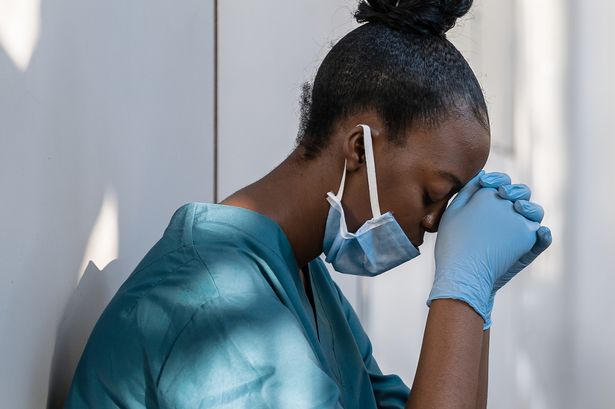The current state of Accident and Emergency (A&E) departments within the National Health Service (NHS) has reached a critical juncture, pushing healthcare professionals to their limits and tragically impacting patient outcomes. One NHS nurse’s recent testimony paints a stark picture of the realities on the ground, recounting harrowing experiences that underscore the severity of the crisis. Overwhelmed by unprecedented demand, understaffed and facing dwindling resources, A&E departments are struggling to provide timely and effective care, often leading to devastating consequences. This nurse’s account details a system buckling under pressure, highlighting the urgent need for systemic change to prevent further preventable tragedies.
The nurse’s testimony reveals a deeply troubling pattern of long waits, inadequate staffing levels, and a pervasive sense of helplessness amongst both patients and staff. Patients arriving at A&E, often in dire need of immediate medical attention, are facing extended delays, sometimes waiting for hours, even days, to be seen by a doctor. This waiting game, played out in overcrowded waiting rooms and overflowing corridors, can have devastating repercussions, particularly for those with time-sensitive conditions. The nurse recounted witnessing the heartbreaking death of a man in his wheelchair while waiting to be seen following a cardiac arrest, a tragedy that underscores the critical consequences of delayed care. This incident, amongst others, highlights the immense pressure placed upon already stretched-thin staff, forced to make impossible decisions about prioritization while managing a constant influx of patients. The sheer volume of patients overwhelms the available resources, leading to compromised care and an environment permeated with stress and despair.
The chronic understaffing within A&E departments exacerbates the crisis. Nurses and doctors are working tirelessly, often taking on extra shifts and extending their working hours to cope with the relentless demand. This constant pressure leads to burnout, exhaustion, and a diminished capacity to provide the high-quality care they are trained to deliver. The lack of adequate staffing also contributes to longer wait times, increasing the risk of adverse outcomes for patients. The nurse’s testimony describes the emotional toll this takes on healthcare professionals, who are constantly confronted with the limitations of a system struggling to keep up with the needs of its patients. The sense of helplessness and moral injury experienced by these dedicated individuals is a clear indication of the urgent need for systemic intervention.
Beyond the immediate pressures of overcrowding and understaffing, the nurse’s testimony points to deeper systemic issues within the NHS. Years of underfunding, coupled with increasing demand driven by an aging population and complex health needs, have created a perfect storm that has brought A&E departments to the brink of collapse. The lack of investment in preventative care and community-based services has shifted the burden onto A&E, forcing it to become the default option for many individuals who could be treated elsewhere. This over-reliance on A&E creates a bottleneck in the system, further exacerbating the existing pressures. The lack of available beds in other hospital departments also adds to the logjam, leaving patients stranded in A&E for extended periods, even after they have been assessed and treated.
The nurse’s harrowing account serves as a powerful call to action, highlighting the urgent need for a comprehensive overhaul of the NHS. Addressing the A&E crisis requires a multi-pronged approach that tackles both the immediate pressures and the underlying systemic issues. Increased funding is crucial to recruit and retain staff, improve infrastructure, and expand capacity. Investing in preventative care and community-based services can help alleviate the burden on A&E by providing alternative pathways for patients who do not require emergency care. Streamlining patient flow within hospitals and ensuring adequate bed capacity in other departments can also help reduce waiting times and improve the overall efficiency of the system.
Ultimately, the nurse’s testimony underscores the human cost of the A&E crisis. The tragic death of the man in his wheelchair, along with countless other stories of suffering and delayed care, are a testament to the urgent need for change. The NHS is a vital institution, providing essential healthcare services to millions of people. However, without significant investment and systemic reform, the system risks further deterioration, jeopardizing the health and well-being of the population it serves. It is imperative that policymakers, healthcare leaders, and the public at large heed the warnings of frontline healthcare professionals and work together to ensure a sustainable and equitable future for the NHS. Only through concerted action can we prevent further tragedies and ensure that everyone has access to timely and effective healthcare when they need it most.














